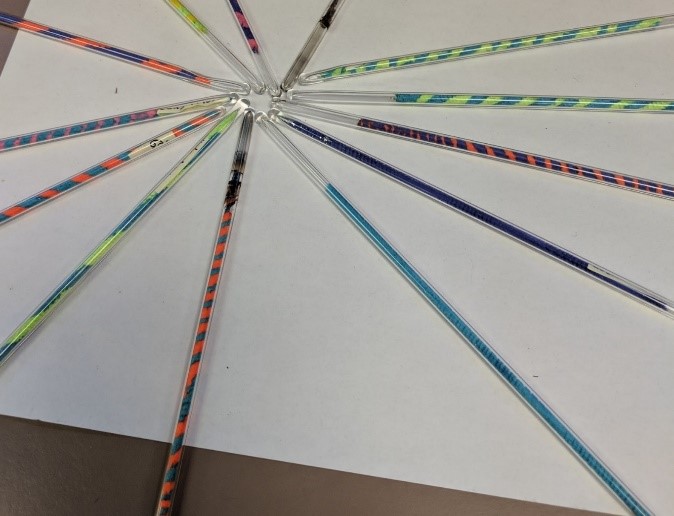
Bunsen burners are used to make glass stirring rods.
Mastering laboratory skills, such as using a Bunsen burner in chemistry class, is crucial for a safe and engaging environment where learners can explore the practical aspects of chemistry. This learning experience taught learners how to safely operate a Bunsen burner to create their own glass stirring rods by cutting, bending, and sealing glass tubes.
Glass stirring rods—typically used for mixing solutions in a chemistry lab—also served as an effective means for learners to practise safe Bunsen burner operation. This hands-on activity allowed learners to experiment with optimal flame height and colour, and with troubleshooting techniques if the Bunsen burner malfunctioned.
The class began with the teacher explaining the importance of the Bunsen burner as an essential tool in the chemistry lab. Safety precautions, including the locations of emergency gas shut-offs, fire extinguishers, and fire blankets, were thoroughly discussed. The teacher presented a glass stirring rod to the learners as an exemplar, along with the necessary tools and supplies for its creation.
The learners were first asked to work with their peers to come up with a creative and effective way to place their name inside the glass tubing and create an appealing design for their glass tube.
Learners cut a glass tube to a length of 18 to 25 centimetres by firmly scoring it with a file and snapping it away from the body. Next, learners inserted pipe cleaners, following their design and leaving a 4 to 5–centimetre gap at each end to prevent burning. To incorporate their names, some used small pieces of paper, while others incorporated their initials into their pipe cleaners. With their glass rods ready, learners were taught the parts and functions of a Bunsen burner and the gas valve. The teacher demonstrated how to light the burner, emphasizing the correct way to turn on the gas valve, ensure gas flow, and achieve the ideal flame height and intensity. Once the Bunsen burner was lit, the teacher showed how to seal the glass tubing by rotating it continuously and holding it at a 45-degree angle in the flame until both ends were sealed.
Learners then attempted to create their glass stirring rods by experimenting with the most effective and safe methods for sealing the glass tubes. They learned to achieve the optimal “roaring flame” by adjusting the air intake, and they understood the consequences of improper techniques, such as failing to rotate the glass tubing correctly, overheating the flame, or placing pipe cleaners too close to the ends, which could cause the glass tubing to droop, bubble, or burn. Throughout this process, the learners were encouraged to collaborate with their peers to tinker, analyze, and to experiment with the flame strength, flame colour, and the most effective angle to hold the glass tubing when exposing it to the flame to seal it. The learners worked with a partner or small group to figure out the best, most effective, and safest way to cut, bend, and seal the glass tube. Each time they made a tube, they consulted with their peers and the teacher for feedback on their techniques to ensure that they were fully confident in the use of a Bunsen burner.
Each learner made multiple rods, perfecting their designs and techniques after each creation. This activity not only allowed learners to create beautiful glass stirring rods but built their confidence to safely operate a Bunsen burner, enhancing their overall laboratory competence and confidence.